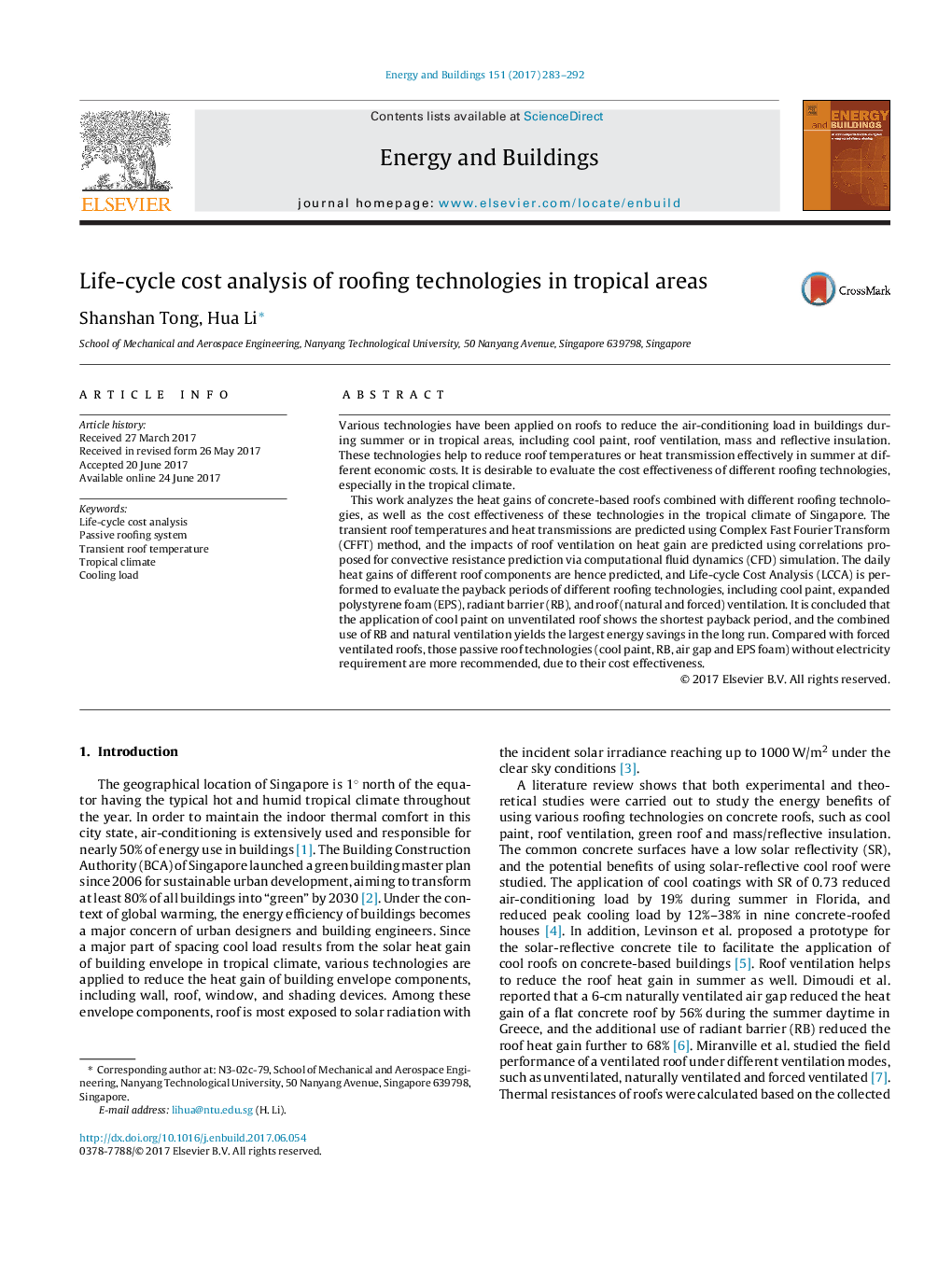| Article ID | Journal | Published Year | Pages | File Type |
|---|---|---|---|---|
| 6481086 | Energy and Buildings | 2017 | 10 Pages |
Various technologies have been applied on roofs to reduce the air-conditioning load in buildings during summer or in tropical areas, including cool paint, roof ventilation, mass and reflective insulation. These technologies help to reduce roof temperatures or heat transmission effectively in summer at different economic costs. It is desirable to evaluate the cost effectiveness of different roofing technologies, especially in the tropical climate.This work analyzes the heat gains of concrete-based roofs combined with different roofing technologies, as well as the cost effectiveness of these technologies in the tropical climate of Singapore. The transient roof temperatures and heat transmissions are predicted using Complex Fast Fourier Transform (CFFT) method, and the impacts of roof ventilation on heat gain are predicted using correlations proposed for convective resistance prediction via computational fluid dynamics (CFD) simulation. The daily heat gains of different roof components are hence predicted, and Life-cycle Cost Analysis (LCCA) is performed to evaluate the payback periods of different roofing technologies, including cool paint, expanded polystyrene foam (EPS), radiant barrier (RB), and roof (natural and forced) ventilation. It is concluded that the application of cool paint on unventilated roof shows the shortest payback period, and the combined use of RB and natural ventilation yields the largest energy savings in the long run. Compared with forced ventilated roofs, those passive roof technologies (cool paint, RB, air gap and EPS foam) without electricity requirement are more recommended, due to their cost effectiveness.
